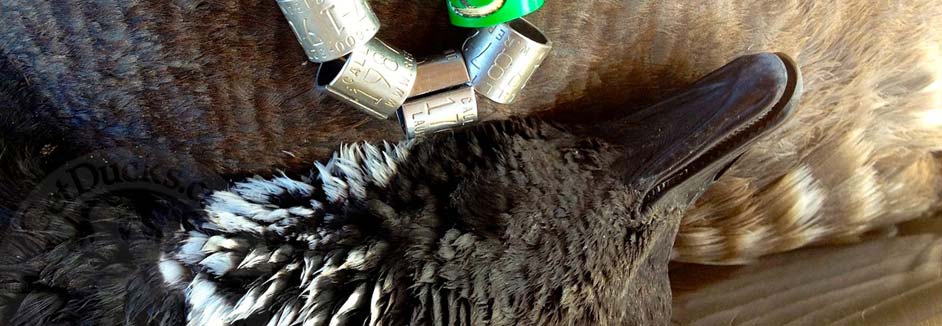Black (Pacific) Brant

Black (Pacific) Brant (Branta bernicula nigricans) is one of 2 North American brant subspecies. There are 3 subspecies worldwide. All brant subspecies breed in the high-Arctic tundra and overwinter in temperate-zone estuarine habitats. Black Brant and Pacific Brant are oftentimes used interchangeably as common names. Makes perfect sense since the other North American subspecies is Atlantic Brant. Black brant are the darkest subspecies. The small heads and short necks are black, and their white necklace is larger and more sharply defined than their pale-bellied Atlantic counterparts. Body plumage is uniformly dark carbon-brown colored; the belly dark umber. By contrast, the flanks are lighter gray and subtly barred. Uppertail coverts and ventral area are white. Like all brant, tidal fluctuations trigger their movements. Loafing and feeding areas, and especially drinking areas during low tides, are great places to hunt. The respond excellently to decoys.
Available Hunts
-
Mexico Duck Hunting Obregon
Mexico duck hunt combo for real duck hunters. All-day hunts for broad variety of Central Flyway and Pacific Flyway duck species.
...read moreMexico duck hunting combo in Obregon is an action-packed “real duck hunters duck hunt” for ducks, doves, options for trophy bass fishing and quail.
- Trophy duck species for nearly all Central and Pacific flyway species to include cinnamon teal, Mexican mallard, more!
- Generous bag limits
- Elegant and Gambel’s quail, trophy largemouth bass fishing options
- Premium, 9-bedroom estancia and unequalled guest services
- Featured – Wildfowl, World of Beretta, MOJO TV, Outdoor Life, NRA Hunter, more
Rate: $4,880 (4-day hunt) -
Mexico Pacific Black Brant Hunting – Baja
Pacific Black Brant hunting in Baja, Mexico is perfect for avid hunters looking to focus strictly on brant hunting.
...read moreMexico Brant Hunting Baja now the absolute go-to for serious brant hunters. Only 4 weekends annually, selected for best brant hunting tide conditions. Usually sells out well in advance!
- Excellent, beach-front hotel
- English-speaking host
- Liberal Pacific Black Brant limits
- 3-mornings dedicated strictly to brant hunting
- Inclusive from San Diego
- Saturday night’s “bay feast” client favorite
Rate: $3,350

Ardent North American waterfowl species collectors will want to target both Atlantic and Pacific Brant subspecies. Though hunted similarly, their appearances are distinctly different. Certain parts of coastal Alaska and western Mexico are the best places to collect Black Brant. Migration has changed substantially in the past couple decades, and traditional brant hunting areas in British Columbia, Washington, Oregon and Northern California require dedication.
Black brant, or Pacific Brant, breed in northwestern Alaska, Canada and eastern Siberia, overwintering primarily from southern Alaska through Mexico’s Sea of Cortez. Wintering Black Brant feed primarily on sea lettuce, eelgrass and similar materials, rarely straying from estuaries. In Mexico, they usually come into bays from the Sea of Cortez when the tide falls to drink freshwater, especially, and to loaf or eat grit.
Likely due to increased eelgrass availability, Pacific Black Brant are delicious. Whether it’s a function of habitat quality in Alaska, global warming trends, or a combination of things has not been determined, but their southerly migration seems to have withered in recent years. A relatively high percentage seems to be banded from past studies, but it’s my understanding that the banding of Pacific Black Brant has not occurred in the past several years.







